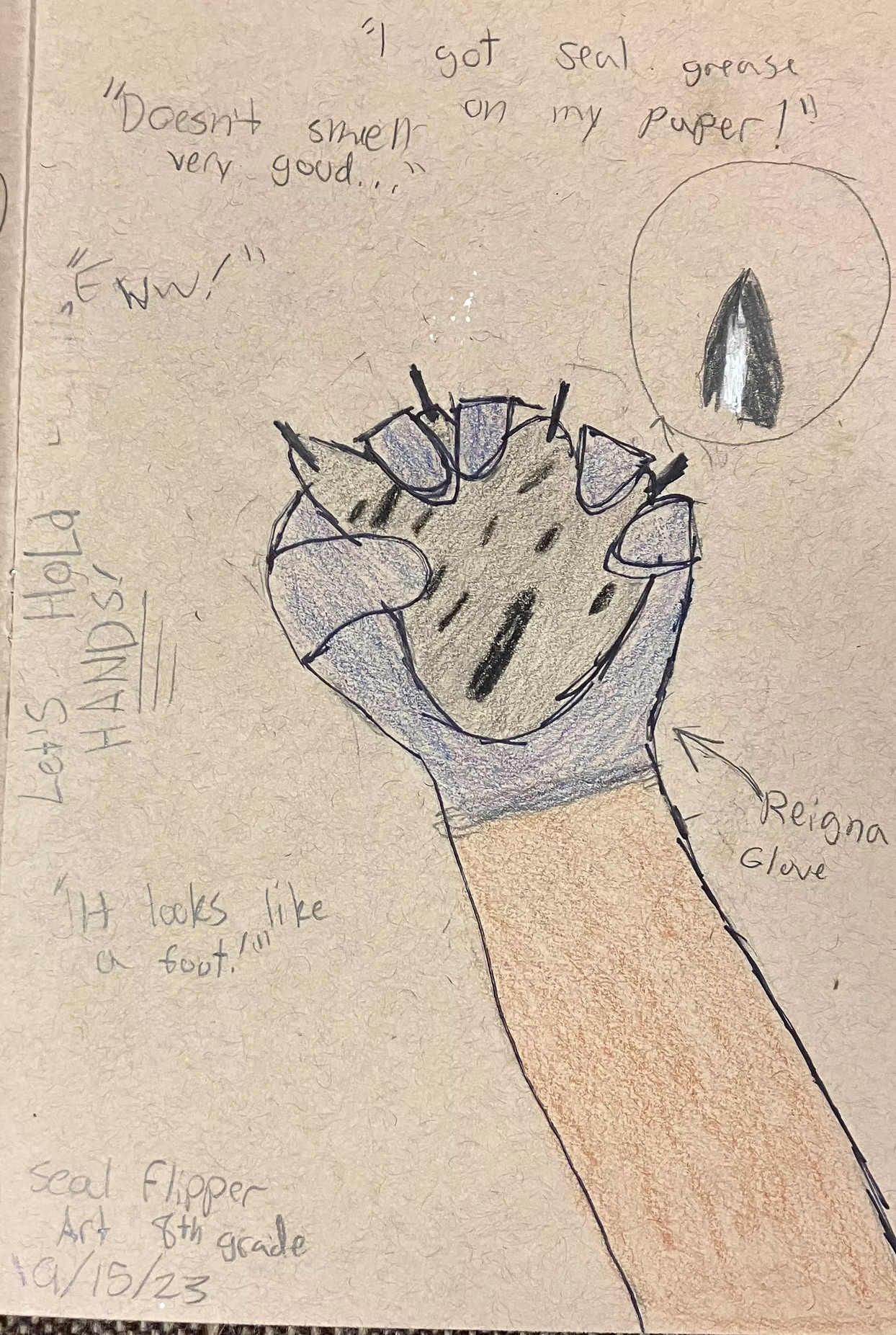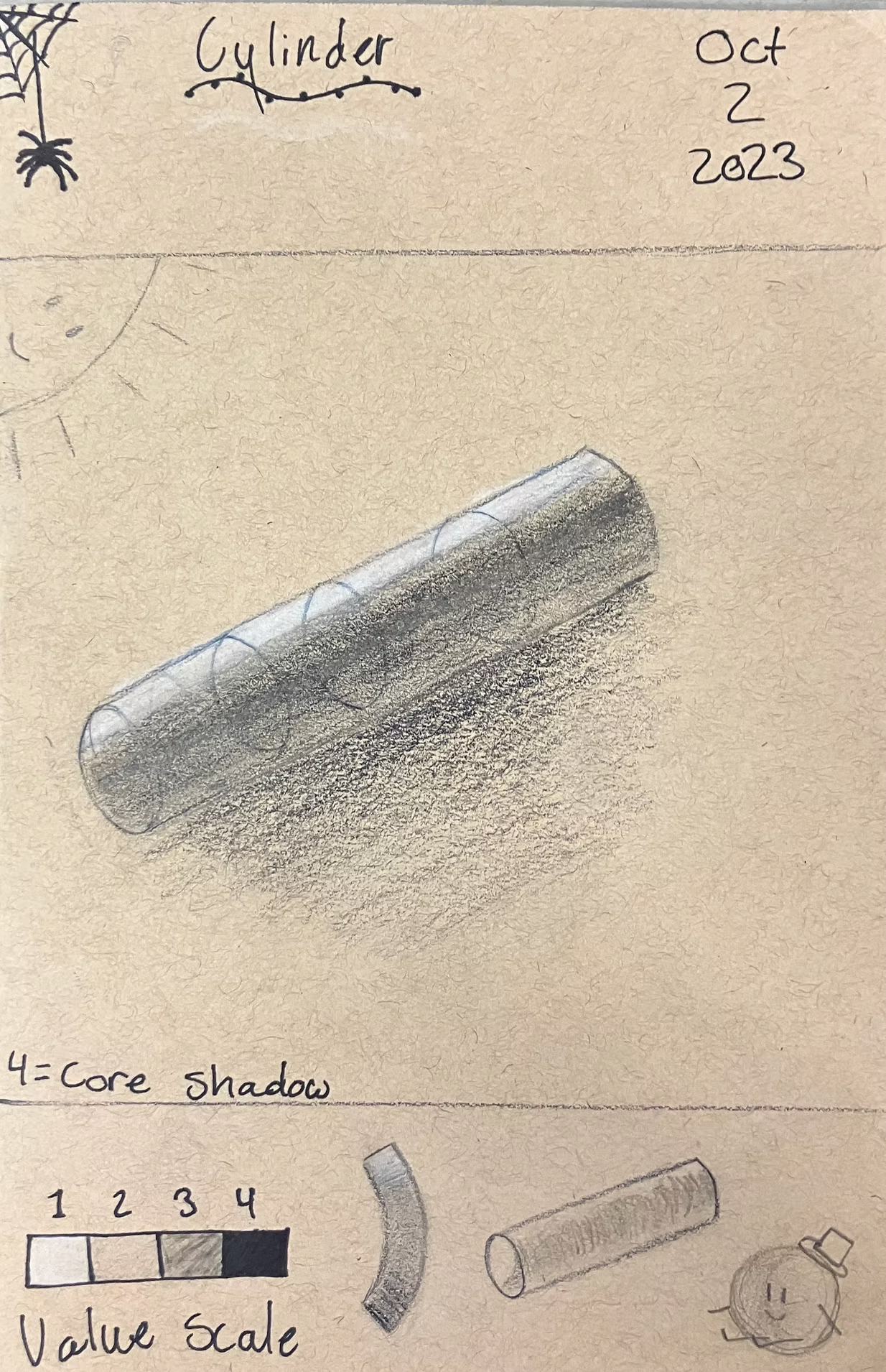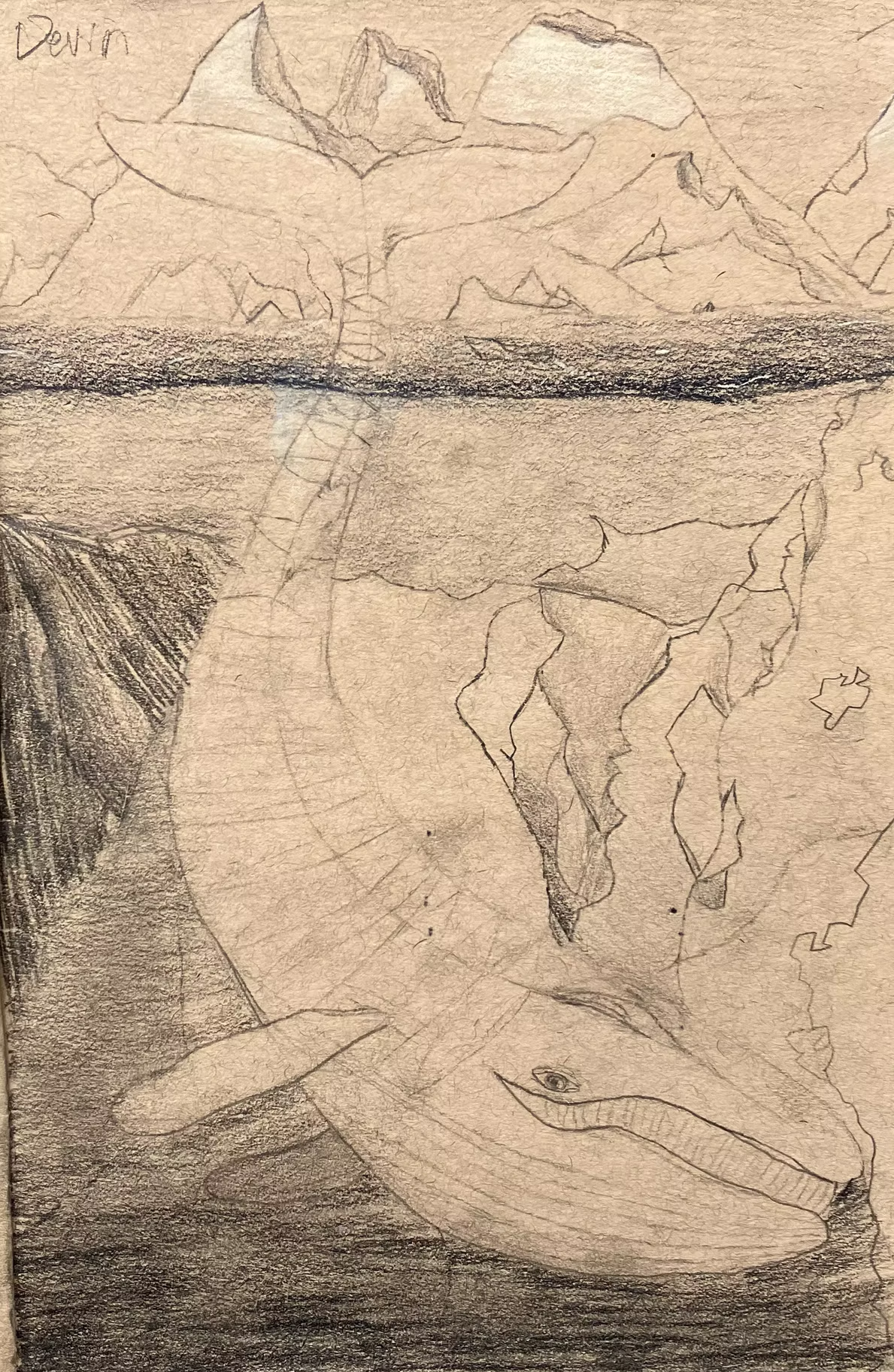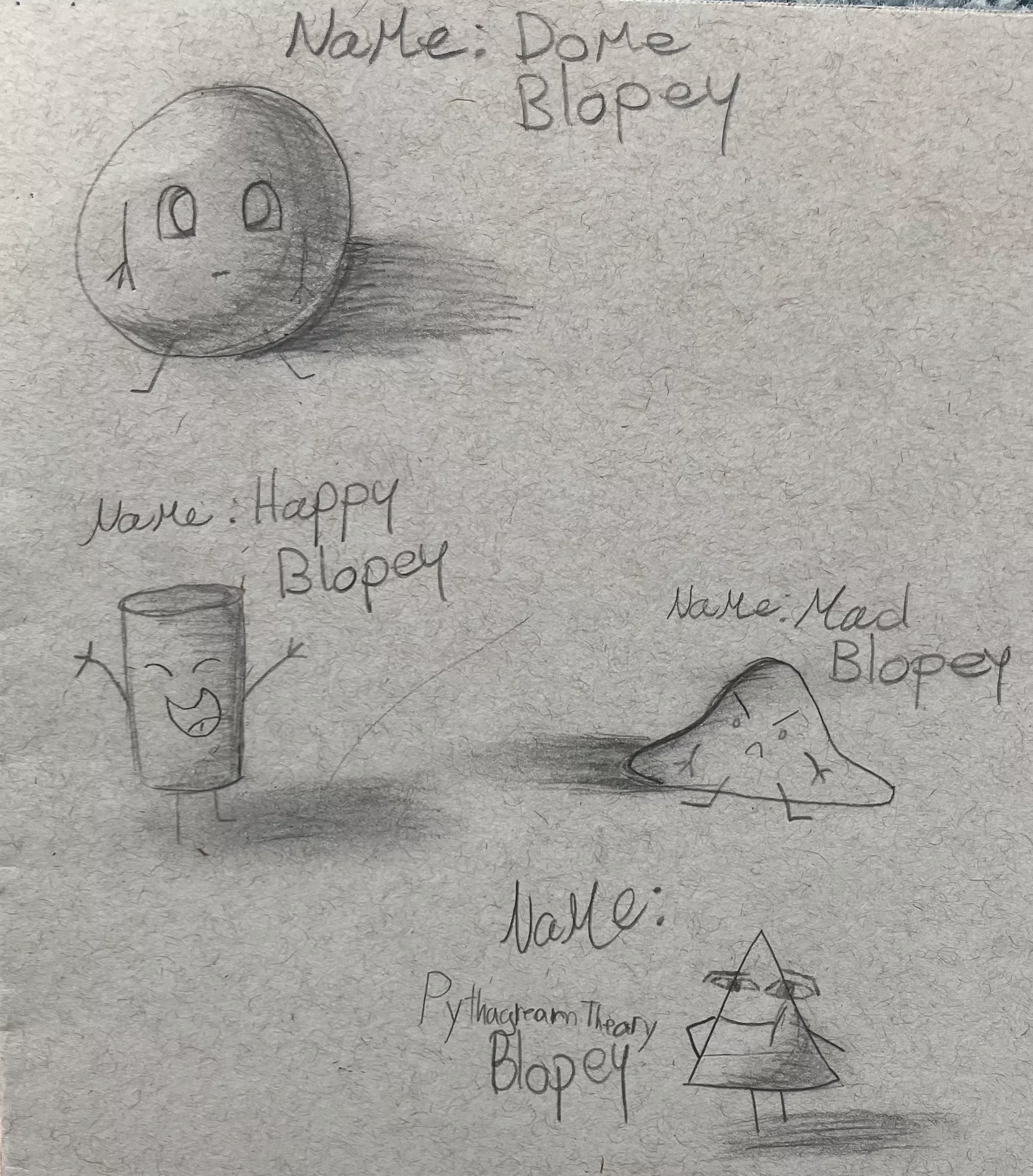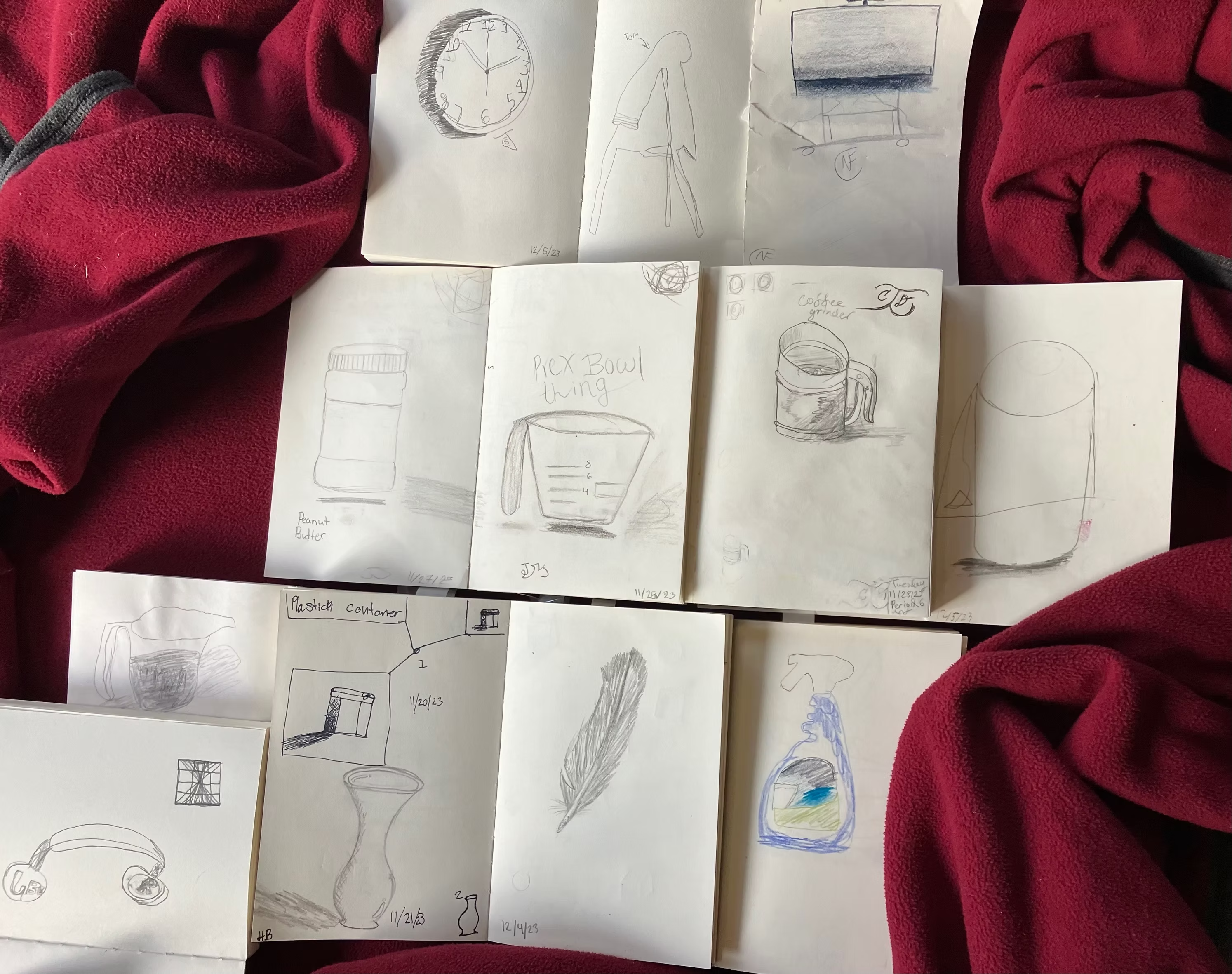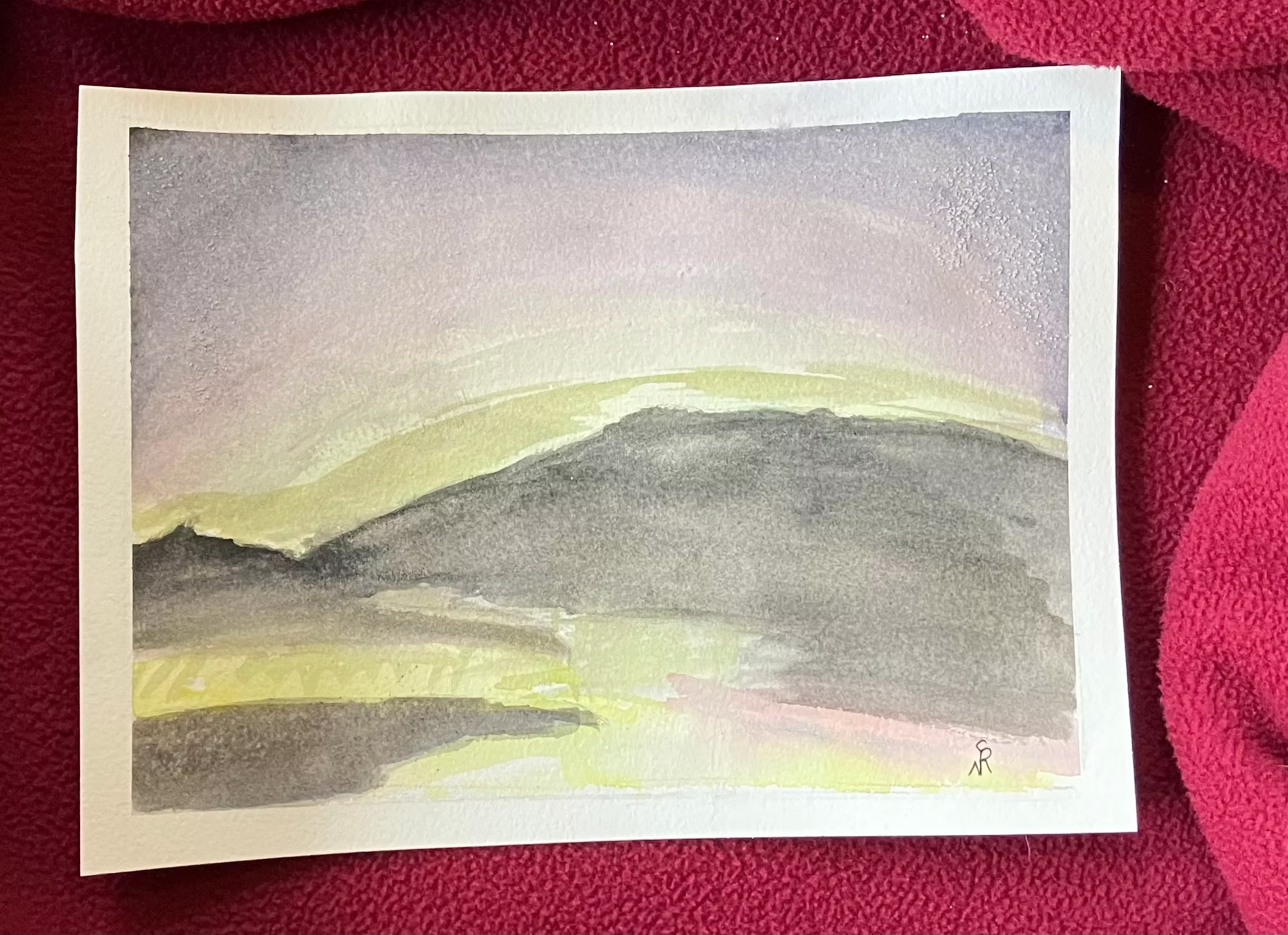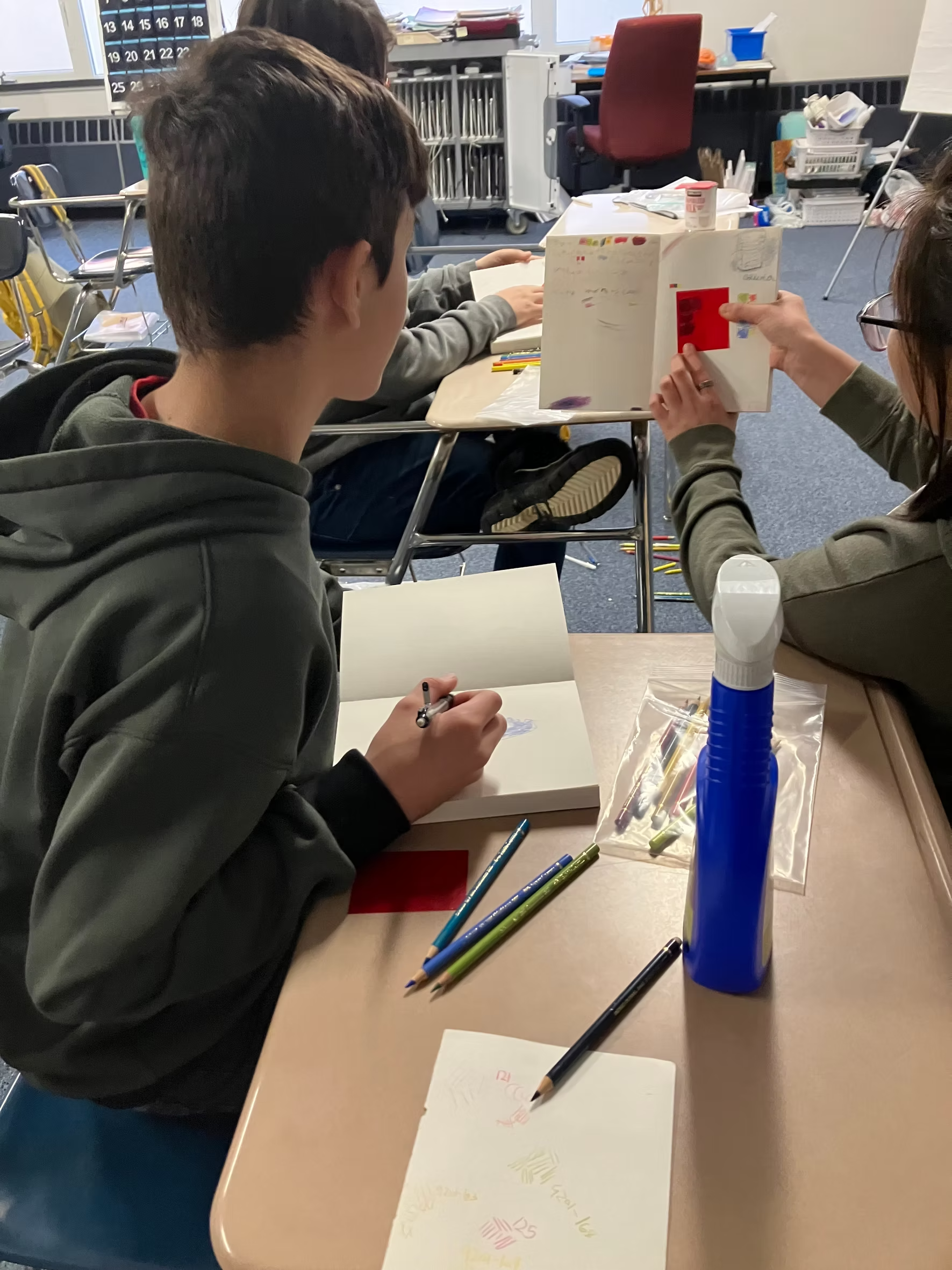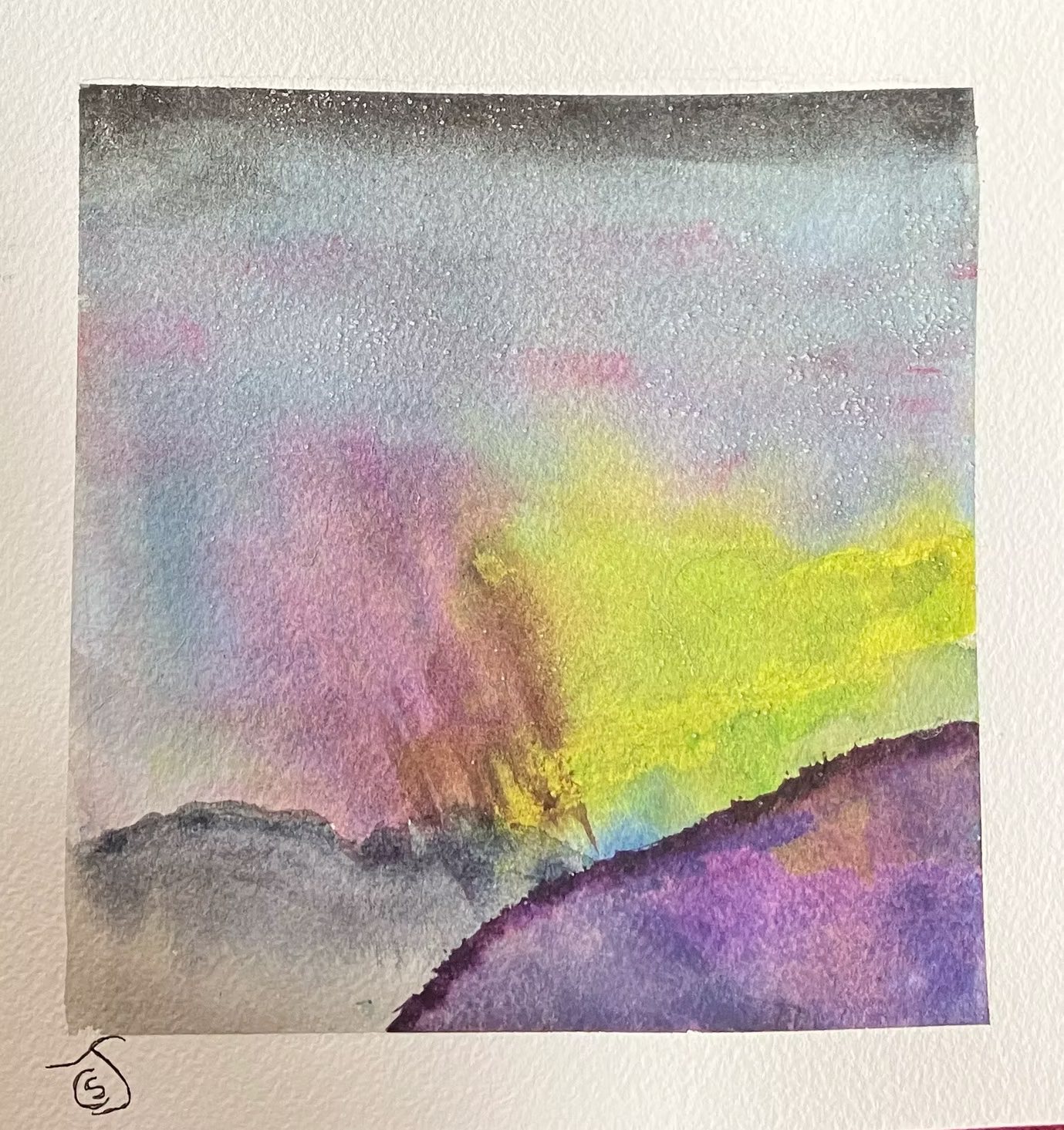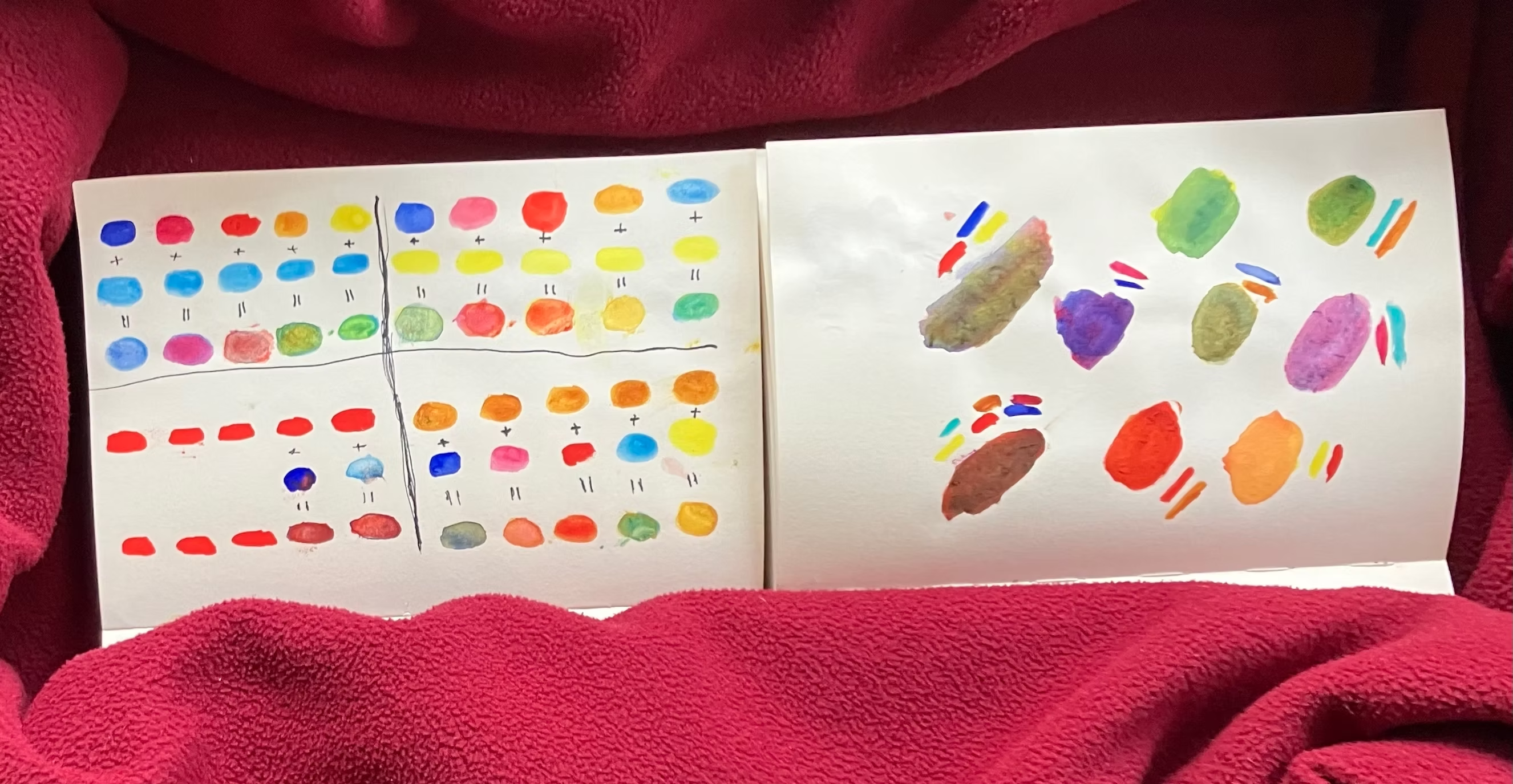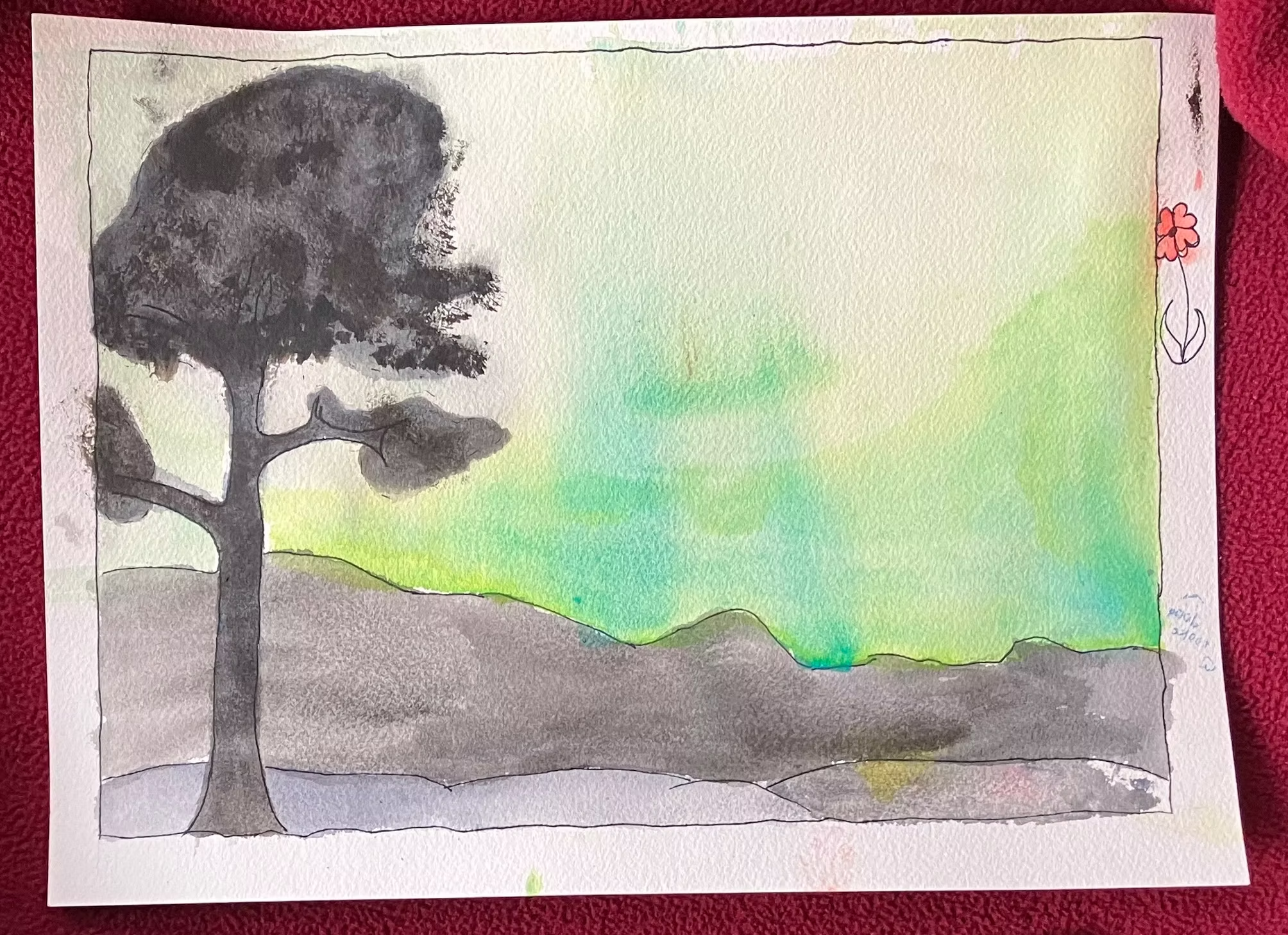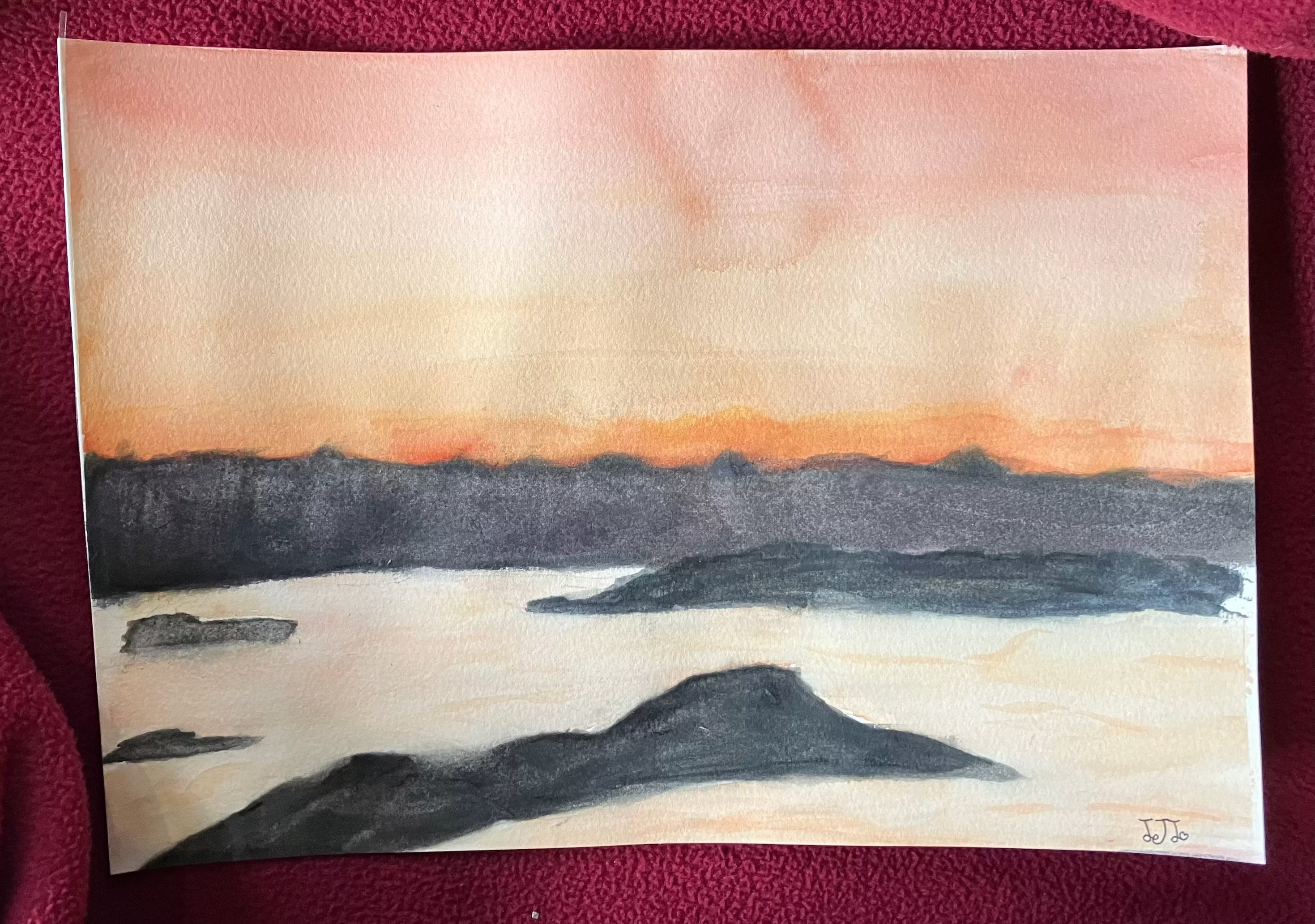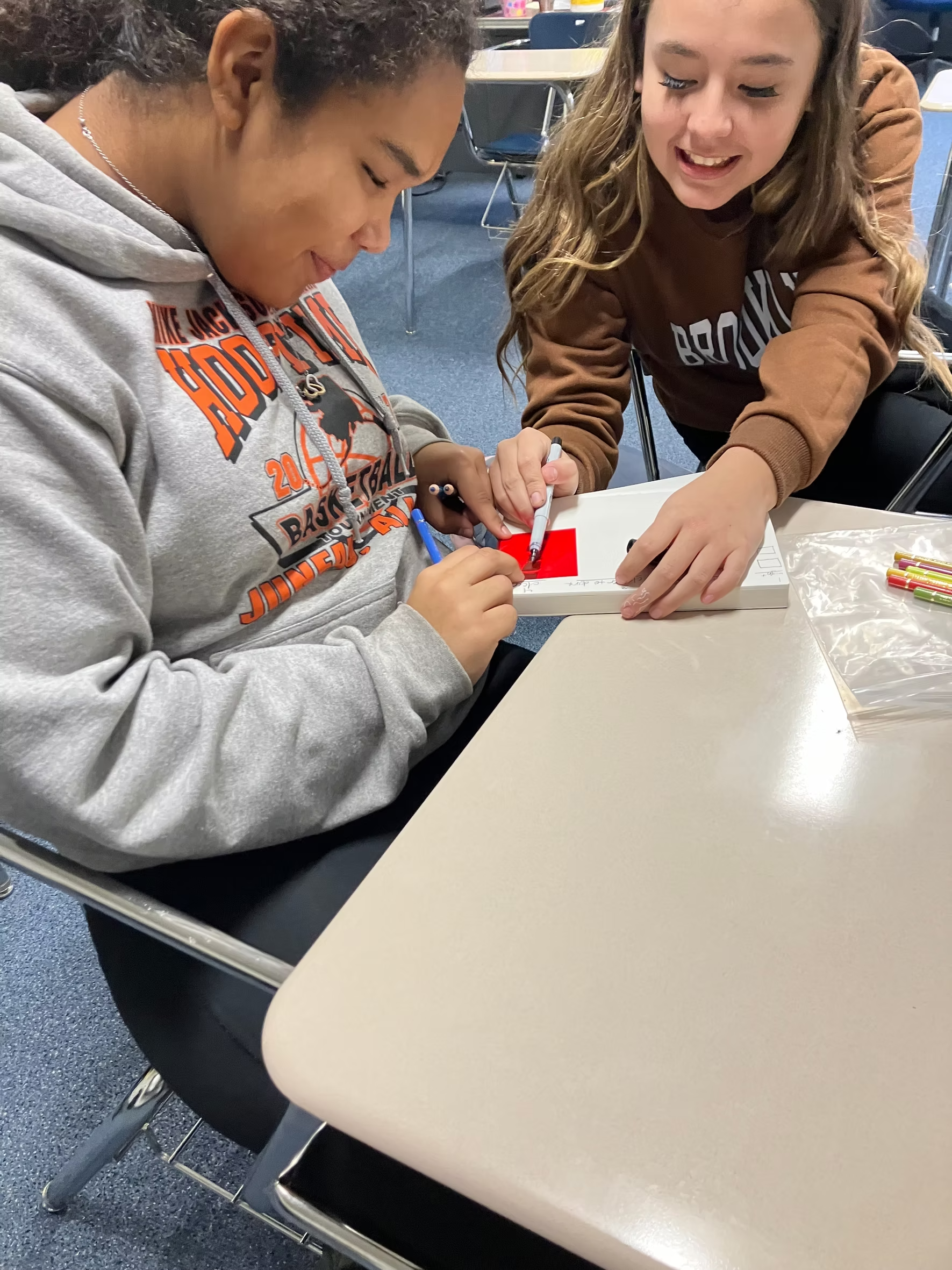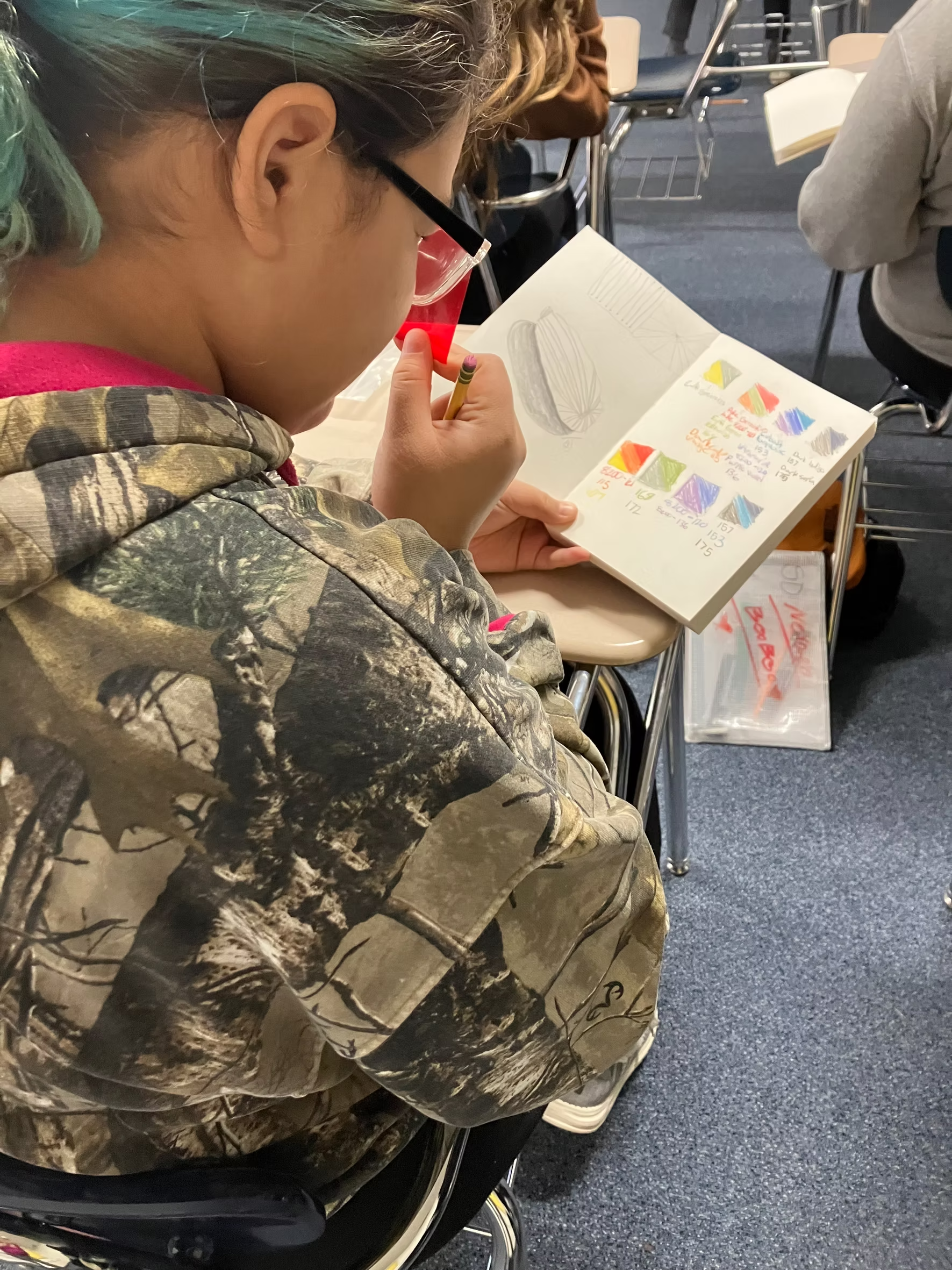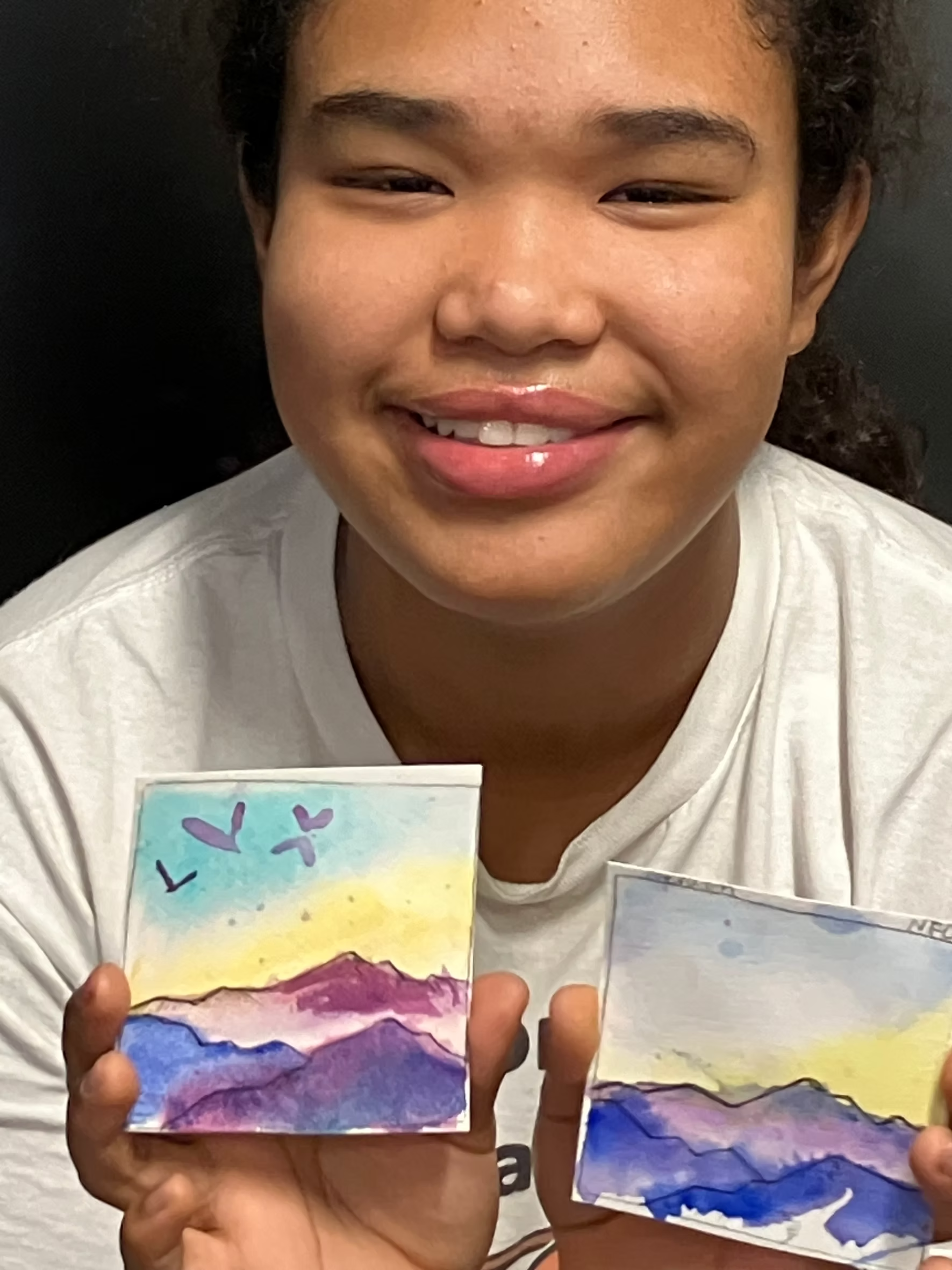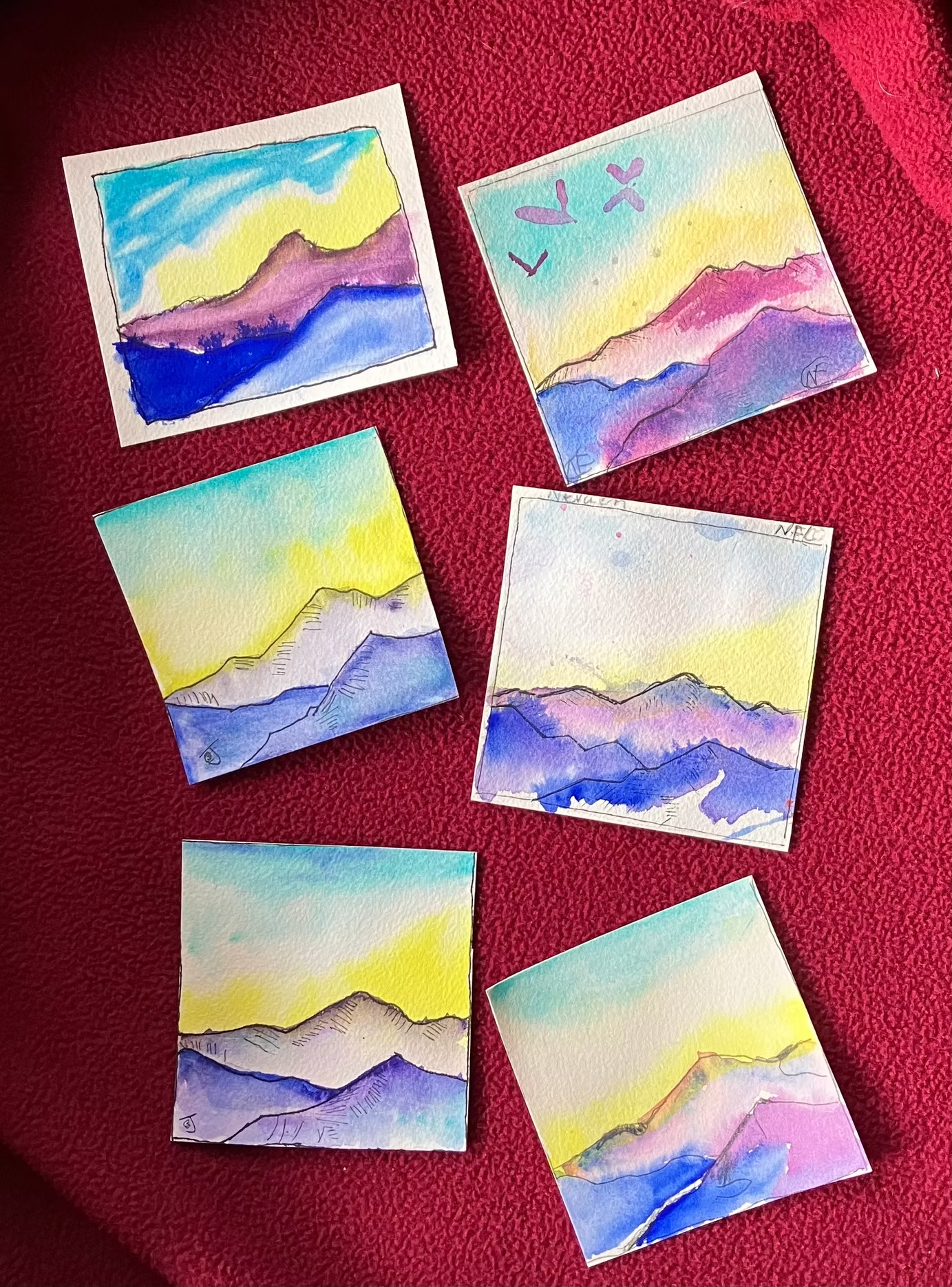
Summary
Details
This semester-long class focused on the skills of seeing and drawing in order to sketch from observation in black and white and, eventually, watercolor. Every period started with five-minute warm-ups: putting in the pencil miles to draw circles, long and straight lines, ellipses, and curves with varied line thickness. We even experimented with syncing our breathing with the pencil strokes. After warm-ups, we shifted to the weekly focus, based on an early survey of what the students wanted to learn to draw. I organized the class around foundational art skills and concepts using simple, affordable set ups. I was very proud of how the 8th graders rose to this challenge.
Their first goal was local marine mammals. We began by learning how to create an impression of three dimensions. This introduced the students to using toned paper with various pens and dark colored pencil. They created Blobbies, rounded forms organized with cross-contour lines and covered with texture. Then they learned to use light and dark values to create believeable seals, sea lions, and whales. We even spent two sessions drawing actual seal flippers from the seal necropsy sponsored by Sealaska Heritage Institute.
Sea creatures led us easily into pen or graphite Quick Sketches of common objects: five to fifteen minutes to sketch a flour sifter or a mug or a mini-pumpkin (each day a different item from the classroom and kitchen.)
Then we focused on color. The students used colored pencils to explore principles of color theory. I needed them to understand a host of concepts — hue, temperature, saturation, color value, and complements. Among a variety of activities, they worked in teams with red transparency to identify value changes. At last, they were ready to experiment with mixing the actual colors of nature from only primary and secondary colors.
The class’s final project was working with watercolor. Students mixed all their colors from seven hues: two reds, blues, and yellows and one very dark blue or umber. With just those plus a round brush, a large flat brush and high quality watercolor paper, they created a series of guided mini-landscapes. Then they used personal or published photos from Southeast Alaska to paint a personal choice landscape.




